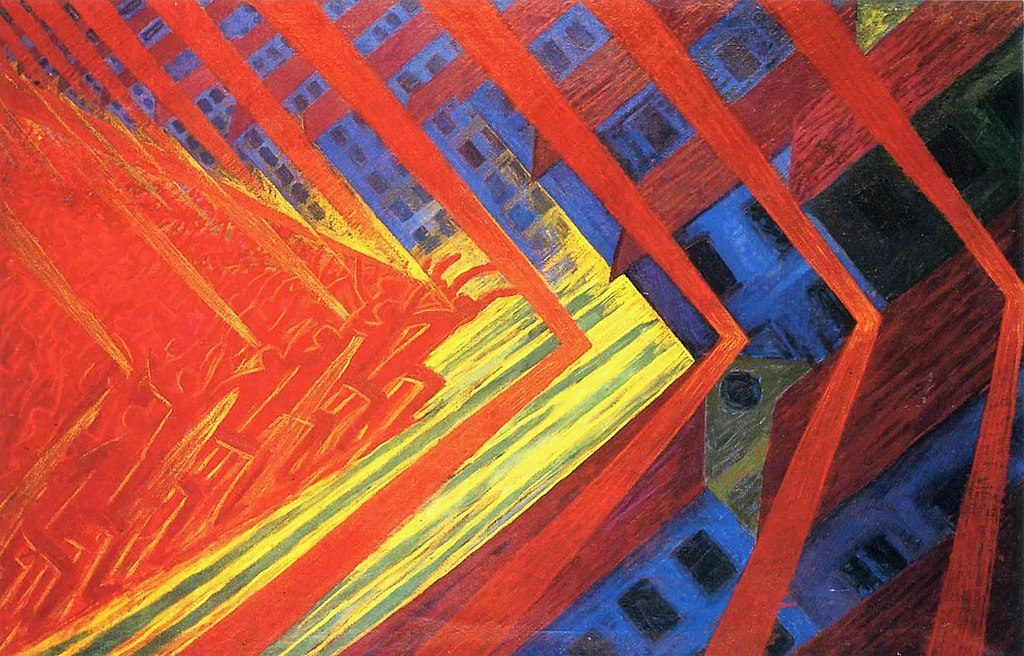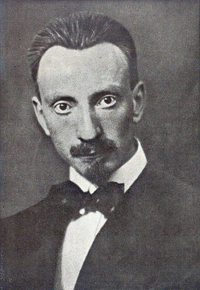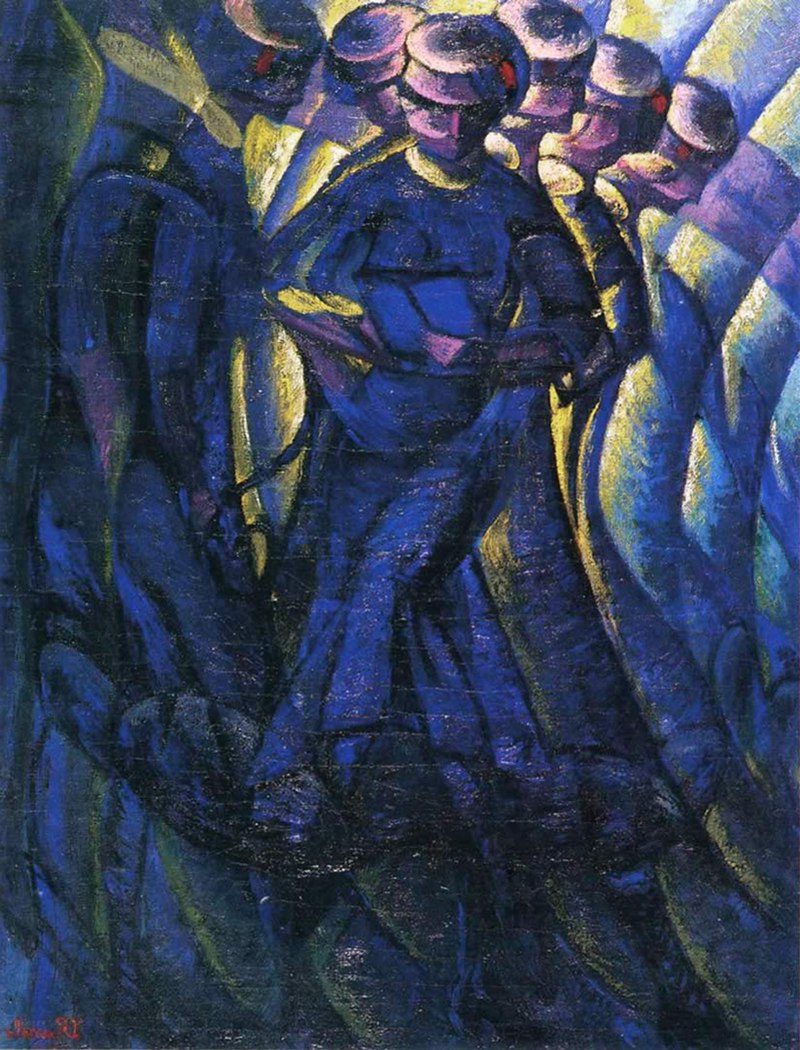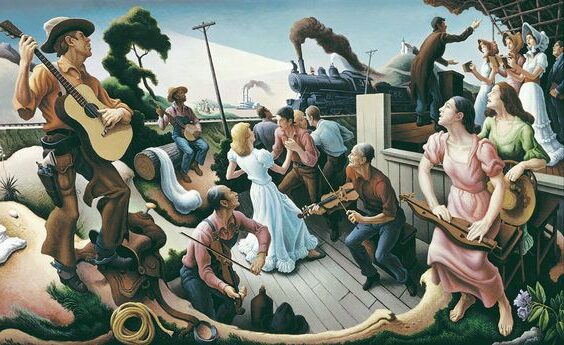Luigi Russolo: Painter and Pioneer of Futurist Music
Born: 30 April 1885, Portogruaro, Italy
Death: 4 February 1947, Laveno-Mombello, Italy
Art Movement: Futurism
Nationality: Italian
Institution: Seminary of Portograuro
Luigi Russolo: Painter and Pioneer of Futurist Music
Life and Career of Luigi Russolo
Luigi Russolo was an Italian Futurist painter, composer, and inventor. He made significant contributions to avant-garde art and music in the early 20th century.
His life and career spanned several important periods in European history and art movements.
Early Years and Introduction to Art
Luigi Russolo was born on April 30, 1885, in Portogruaro, near Venice, Italy. He finished his secondary education at the Seminary of Portograuro in 1901. After completing his studies, Russolo moved to Milan, where he began to explore his interest in the arts.

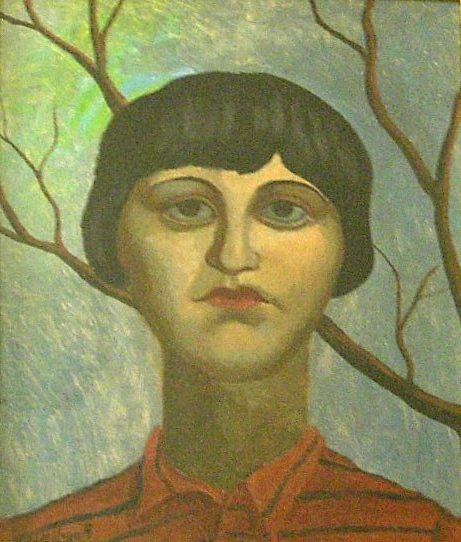
In Milan, Russolo immersed himself in the city’s vibrant artistic scene. He started studying painting and quickly developed his skills. The bustling urban environment of Milan greatly influenced his artistic vision.
Russolo’s early works showed promise, and he began to gain recognition in artistic circles. His talent and innovative ideas caught the attention of other young artists who were eager to challenge traditional artistic norms.
Involvement with the Futurist Movement
In the early 1910s, Russolo became involved with the Futurist movement. He signed the Manifesto of Futurist Painting and the Technical Manifesto of Futurist Painting. These documents outlined the bold new artistic direction that Russolo and his fellow Futurists sought to pursue.
Russolo worked closely with other prominent Futurists like Filippo Tommaso Marinetti and Umberto Boccioni. Together, they aimed to create art that celebrated modernity, speed, and technology.
In 1913, Russolo wrote “The Art of Noises,” a groundbreaking manifesto that proposed the use of noise in music. This work established him as a pioneer in experimental music and noise art.
Russolo’s paintings during this period often depicted industrial scenes and urban landscapes. He used bold colors and dynamic forms to capture the energy of modern life.
World War I and Aftermath
World War I had a significant impact on Russolo’s life and career. Like many artists of his generation, he served in the military during the conflict. The war experiences likely influenced his artistic perspective.


After the war, Russolo continued to explore new artistic and musical ideas. He built experimental musical instruments called “intonarumori” or noise-intoners. These devices allowed him to create the unconventional sounds he described in “The Art of Noises.”
Russolo held concerts featuring his noise music in various European cities. While some audiences were intrigued, others found his work too radical.
Later Years and Legacy
In the 1920s and 1930s, Russolo’s artistic output decreased. The rise of Fascism in Italy created a challenging environment for avant-garde artists. He spent time in Paris during this period, continuing his musical experiments.
Russolo returned to Italy in the late 1930s. He settled in Cerro di Laveno on Lake Maggiore, where he focused on painting landscapes and still lifes. This marked a shift from his earlier, more experimental work.
Luigi Russolo died on February 4, 1947, in Cerro di Laveno. His contributions to Futurism and experimental music have had a lasting impact. Today, he is recognized as a visionary artist who helped shape the course of 20th-century art and music.
Artistic Innovations and Philosophies

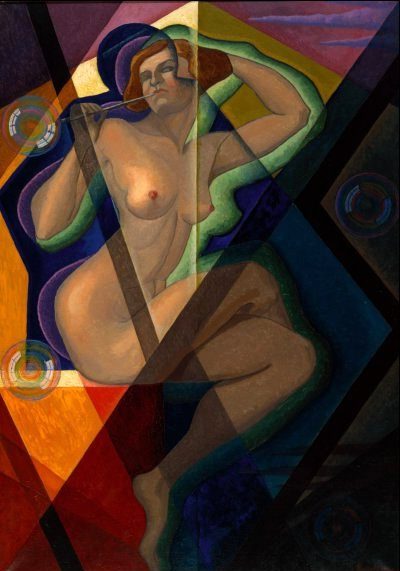
Luigi Russolo made groundbreaking contributions to music and art in the early 20th century. His ideas challenged traditional notions of sound and music, paving the way for new forms of artistic expression.
The Art of Noises and Manifesto
Russolo wrote “The Art of Noises” manifesto in 1913. This bold text called for a new approach to music that embraced the sounds of the modern world. He argued that industrial noises should be part of musical compositions.
Russolo believed that traditional music was too limited. He wanted to expand the range of sounds used in music. His manifesto listed six families of noises, including roars, whistles, whispers, and screeches.
The ideas in “The Art of Noises” were radical for their time. They influenced many later composers and musicians. Russolo’s work helped lay the foundation for noise music and experimental sound art.
Development of Intonarumori
To put his ideas into practice, Russolo created new musical instruments called intonarumori. These were acoustic noise generators that could produce a wide range of sounds.

Dynamism of a Car (1913) by Luigi Russolo
Each intonarumori had a unique design and purpose. Some mimicked industrial noises, while others created natural sounds. Russolo built about 27 different types of these instruments.
The intonarumori allowed Russolo to perform his noise music live. He gave concerts featuring these strange new instruments. Though many listeners were shocked, some saw the potential in Russolo’s innovative approach.
Contribution to Experimental Music
Russolo’s work opened up new possibilities in music. He showed that any sound could be used in musical composition. This idea had a huge impact on 20th-century music.
Many later musicians and composers were inspired by Russolo. His concepts influenced the development of electronic music. Experimental artists often cite him as an important predecessor.
Russolo’s philosophy also affected how people think about sound in general. He encouraged listeners to find beauty in everyday noises. This changed how some people experience and appreciate their sonic environment.
Collaborations and Performances
Luigi Russolo’s innovative approach to music and art led to several notable collaborations and performances. His work pushed boundaries and sparked both excitement and controversy.
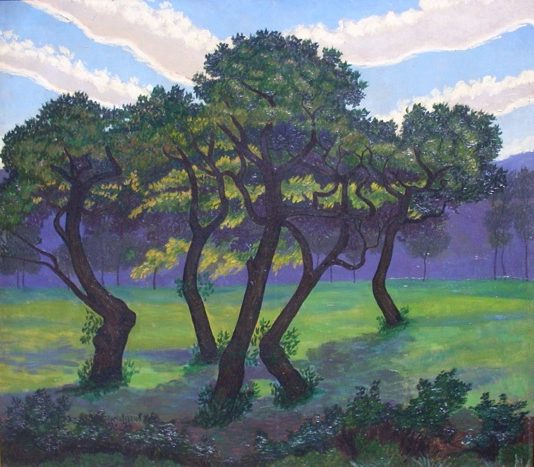
Convivio (Vecchi Castagni) (1945) by Luigi Russolo
Concerts and Public Reaction
Russolo held his first noise concert in Milan in 1913. He performed with his brother Antonio using intonarumori, noise-making machines they invented. The concert caused a stir, with some audience members cheering and others booing.
In 1921, Russolo staged a major concert at the Théâtre des Champs-Élysées in Paris. This performance drew attention from art critics and fellow musicians. Some found his work fascinating, while others were confused or annoyed by the unusual sounds.
Russolo’s Gran Concerto Futuristico in London in 1914 ended in a riot. The audience threw vegetables at the stage and police had to intervene. Despite the chaos, these events helped spread Russolo’s ideas about noise music.
Partnership with Antonio Russolo
Luigi worked closely with his brother Antonio on many projects. They built noise instruments together and performed as a duo. Antonio played a key role in developing and refining the intonarumori.
The brothers made some of the first recordings of noise music on phonograph cylinders. Sadly, most of these early recordings have been lost. Their partnership was cut short when Antonio died in World War I.
After Antonio’s death, Luigi continued to work on noise music alone. He kept improving his instruments and wrote more compositions. His solo work became more focused on the link between sound and visual art.
Influence on Contemporary Music and Art
Russolo’s ideas had a big impact on later artists and musicians. His concept of noise as music inspired many experimental composers. John Cage cited Russolo as an influence on his own work with prepared pianos and chance music.


Electronic music pioneers like Pierre Schaeffer drew on Russolo’s theories. His ideas about using everyday sounds in art paved the way for musique concrète. Even some rock and industrial musicians trace their roots back to Russolo’s noise experiments.
In the visual arts, Russolo’s work with synesthesia influenced other painters. His attempts to show sound through color and shape inspired abstract artists. Today, sound art installations often echo Russolo’s early noise performances.
Frequently Asked Questions
Luigi Russolo made major contributions to Futurism and modern music. His innovative noise machines and musical theories challenged traditional ideas about sound and art.
What was Luigi Russolo’s role in the development of Futurism in art?
Russolo was a key figure in the Futurist movement. He signed important Futurist manifestos about painting. His artwork explored themes of movement, technology, and urban life.
Russolo’s paintings featured bold colors and abstract forms. They aimed to capture the energy and noise of the modern world.
How did Luigi Russolo’s ‘intonarumori’ contribute to modern music?
Russolo invented noise-making machines called ‘intonarumori’. These devices produced a range of mechanical and industrial sounds.
The intonarumori expanded the palette of musical tones. They allowed composers to incorporate everyday noises into their works.
What are the key features of Luigi Russolo’s noise machines?
Russolo’s noise machines had large funnel-shaped speakers. Inside were various mechanisms to create different sounds.
The devices could produce buzzing, roaring, and whistling noises. Russolo gave them names like “the howler” and “the crackler”.
How do Luigi Russolo’s paintings reflect his musical theories?
Russolo’s paintings often depicted sound and motion. He used swirling lines and shapes to suggest noise and energy.
His art tried to represent the chaotic sounds of modern life. This linked to his ideas about using noise in music.
In what ways did Luigi Russolo’s work challenge traditional concepts of music and sound?
Russolo argued that industrial noises could be musical. He rejected the limits of traditional instruments and harmonies.
His 1913 manifesto “The Art of Noises” called for new approaches to composing. It pushed for the inclusion of everyday sounds in music.
What influence did Luigi Russolo have on later avant-garde and experimental artists?
Russolo’s ideas inspired many 20th-century composers. His work paved the way for electronic and concrete music.
Artists like John Cage cited Russolo as an influence. His concepts helped shape noise music and industrial genres.

